Jimmie Mattern is well known for his two attempts to fly around the world. Both flights were promising in the initial stages, with Mattern reaching early landmarks in record time. The end result of these flights were to prove disastrous; crashed and stranded over Siberia’s icy wastelands. With this and many other flights, Jimmie Mattern earned his place on the Longines Honor Roll.
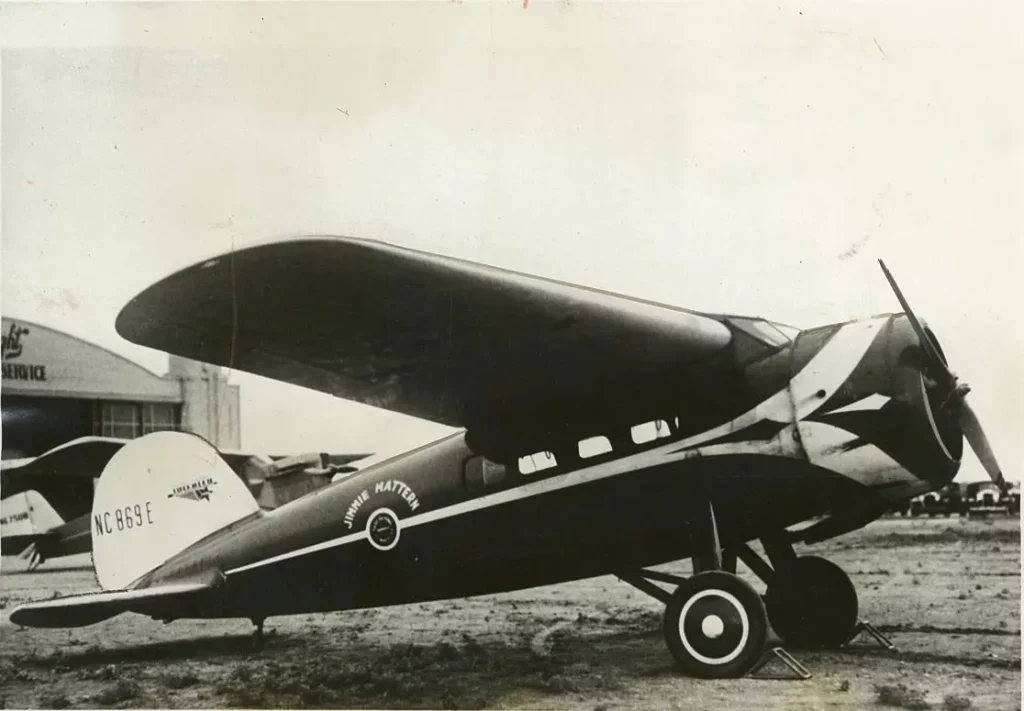
Jimmy Mattern’s Lockheed Vega
photo credit ACME photos
The Record Attempt
In the wake of Wiley Post and Harold Gatty’s extraordinary journey Mattern hoped to achieve this same feat with a faster time. Bennett Griffin would serve as navigator and co-pilot in a modified Lockheed Vega named The Century of Progress. Gatty himself advised Mattern and Griffin, as the two aviators planned and prepared for their around the world adventure.
John P.V. Heinmuller remembers The Century of Progress as having ‘a very complete outfit of instruments, including blind-flying aids and ice indicators.’[1] Kitted out, impeccably prepared and with a world record to shoot at the aviators were ready for take-off.
On July 4th, 1932 they ‘got away at 5:01 A.M. under ideal conditions, lifting the big monoplane after less than thirty seconds along the 4,000-foot runway. It was a Lockheed Vega powered by a supercharged Wasp radial engine, made by Pratt and Whitney.’[2]
Continuing without incident Mattern and Griffin set a new speed record from New York to Berlin; a transatlantic record of 2,000 miles across the ocean in 10 hours and 50 minutes. Making excellent time, both aviators were optimistic.
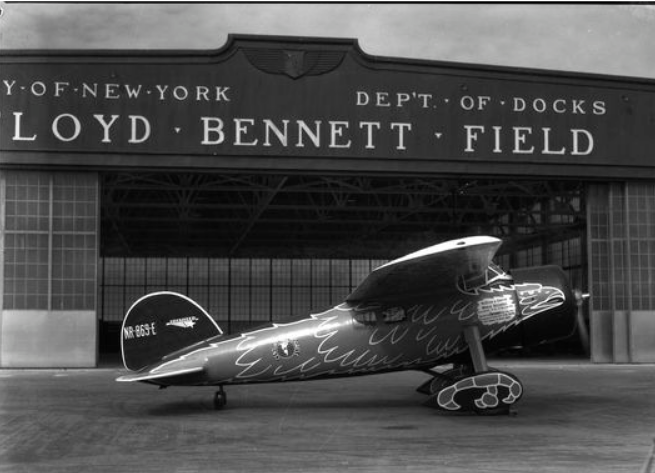
Jimmie Mattern’s Lockheed Model 5 Vega – Century of Progress
Paint scheme for solo attempt in 1933.
Photo credit the Smithsonian.
Flying over Russia the plane experienced some technical difficulties when part of the Vega broke loose, striking the tail section and forcing them down. They landed not far from Minsk some four hundred miles southeast of the Soviet capital; out with Russia’s established air thoroughfare for international fliers. In light of this technical violation Griffin and Mattern were arrested in Russia and interrogated as spies in Moscow. For a full day, the world had no idea where their hopeful aviators had disappeared to.
After government officials secured their release they had lost too much time, besides, The Century of Progress was badly damaged and in no fit state to fly. The wreckage was eventually packaged up and shipped back to Mattern by Russia. They were welcomed back to a sigh of relief at their safe return and congratulations on their attempt.
Mattern, undeterred by failure, gets back in the cockpit to repeat his previous attempt. This time, he will fly alone. With The Century of Progress rebuilt and ready to fly Mattern sets off on June 3rd 1933.
The Second Attempt
Mattern ‘lifted his heavily loaded plane into the air without difficultly and soared off seaward after a farewell dip of his wings as he gained altitude.’[3]
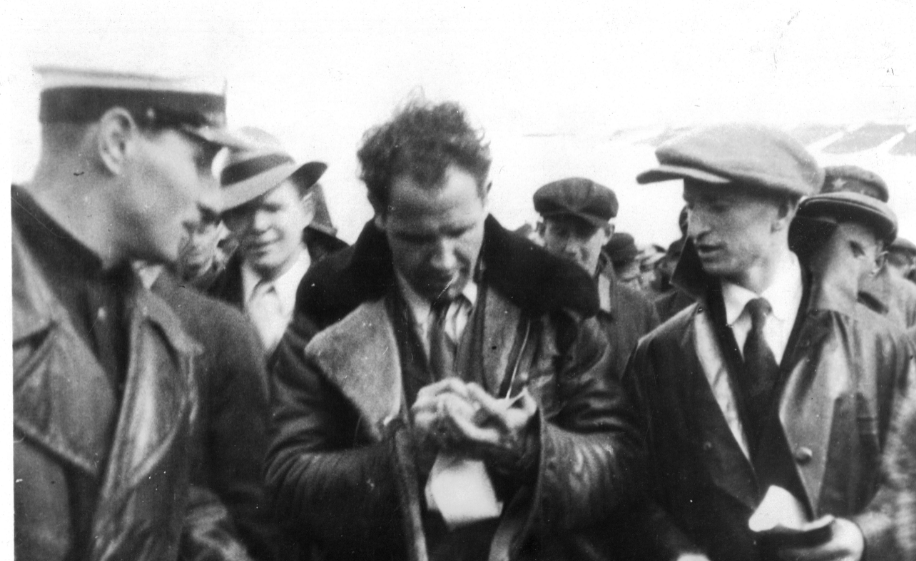
Veering well off course, Mattern ended up in Norway some 48 hours later. Then from Oslo onto Moscow before losing his way on route to Khabarousk. While finding his bearings on Anadyr River some locals filled his plane with inadequate fuel. Unbeknownst to Mattern his engine would seize up over the vast wasteland of Arctic Siberia.
Crashed in the Arctic
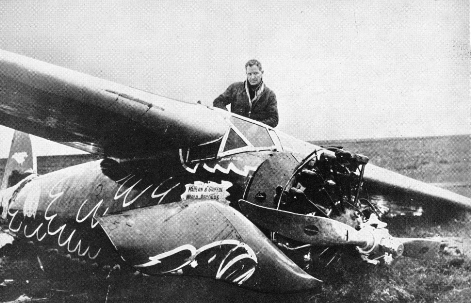
His engine failed on the way to Nome, just 4 hours after take-off on June 14th. Forced to crash land the Vega, Mattern was stranded in the frozen tundra. The landing gear was destroyed in the crash and Mattern was badly injured. Heinmuller writes: ‘The story of Mattern’s struggle to keep alive in the desolate Anadyr country, in constant pain from a badly cracked ankle, with almost nothing to eat and little to drink but swamp water, was an epic of its time.’ [4]
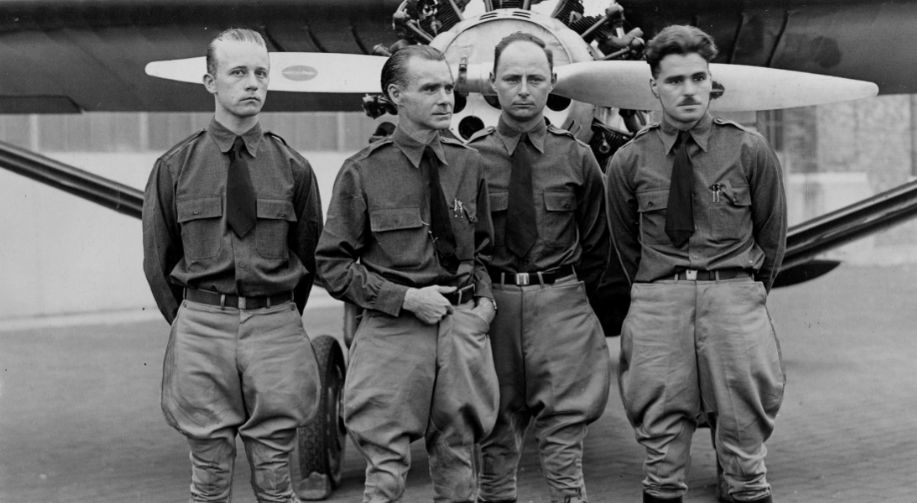
For 2 weeks he dragged his fractured ankle over ice and snow to the Anadyr River, a distance of a mile and a half, to watch for a boat rescue that never came. Sleeping in the plane’s fuselage and using part of the engine as a stove for 8 days, Mattern had almost given up hope. He moved from the plane to the river bank where he erected a small grass hut and attempted to cobble together a raft that subsequently failed.

He was eventually found by Inuit boatmen who took him to Anadyr and nursed him back to health. Without these Inuit’s he would have surely died. On July 19th he was flown back to the U.S by Russian pilot Sigizmund Levanevsky, whom Mattern would later attempt to rescue after his own ill-fated disappearance.
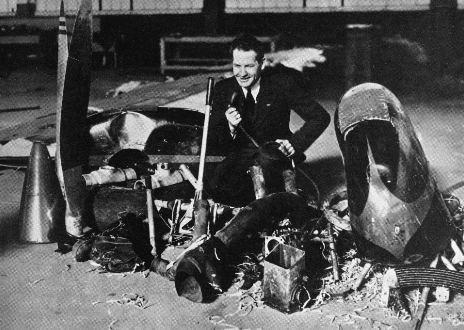
The tale of Mattern’s survival was so extraordinary that he returned to a tremendous welcome. Despite failing in his around the world attempt, he was adored for his bravery and determination.
Mattern and the Wittnauer All Proof Watch
Mattern traveled with a Wittnauer All-Proof Watch on this journey and wrote this about the timepiece
“It gives me great pleasure to advise you that my Wittnauer All-Proof Watch was my only constant companion on my ’round the world solo flight, and it survived all hardships. It is a crash proof timepiece par excellence. After my ’plane crashed and I had to wade and swim in some of the rivers it proved absolutely waterproof. It kept up a true performance when I was lost to civilization for many days. It was a sensation with the Eskimos…who considered it something super-natural. It personifies mechanical perfection heretofore unknown to me, and when I reached New York, it was correct to the minute. I banged it all around. It was dropped on concrete a number of times – still it keeps ticking away. I should not have believed that such a watch could be built, but my experience has shown me that too much cannot be said about this wonderful All-Proof timepiece which I recommend for hard usage.”
Jimmy Mattern on his Wittnauer All Proof Watch

Born in Freeport, Illinois on March 8th, 1905 Mattern fell in love with aviation in a JN-4 Jenny whilst serving with the Army Air Corps. He learned to fly in 1926 and took up a career in barnstorming before a stint as a Hollywood stunt pilot. He flew in the infamous Howard Hughes epic Hell’s Angels as well as Lilac Time and Wings.
He flew cargo for Tex Mex Industries in 1929 and went on to pilot for Texas oil tycoon Carl Cromwell. Between 1930- 1932 Mattern was appointed chief pilot of Cromwell Airlines until the company folded in 1932. This gave Mattern the opportunity to pursue his record breaking attempts.
Following both flights in The Century of Progress Mattern pioneered a new Lockheed P-38 flight design that saved countless lives. Trainee pilots regularly met a bitter end in the P-38, with fatal crashes mounting the death toll. Mattern devised a piggy back training system where the more experienced pilot could take the controls should the trainee falter. From 1938-1939 Mattern substantially cut down the number of training accidents and casualties.
Mattern worked with Lockheed until 1946, testing a vast number and variety of aircraft. Unfortunately he was diagnosed with a ruptured blood vessel and told never to fly again for fear of aggravating the condition.
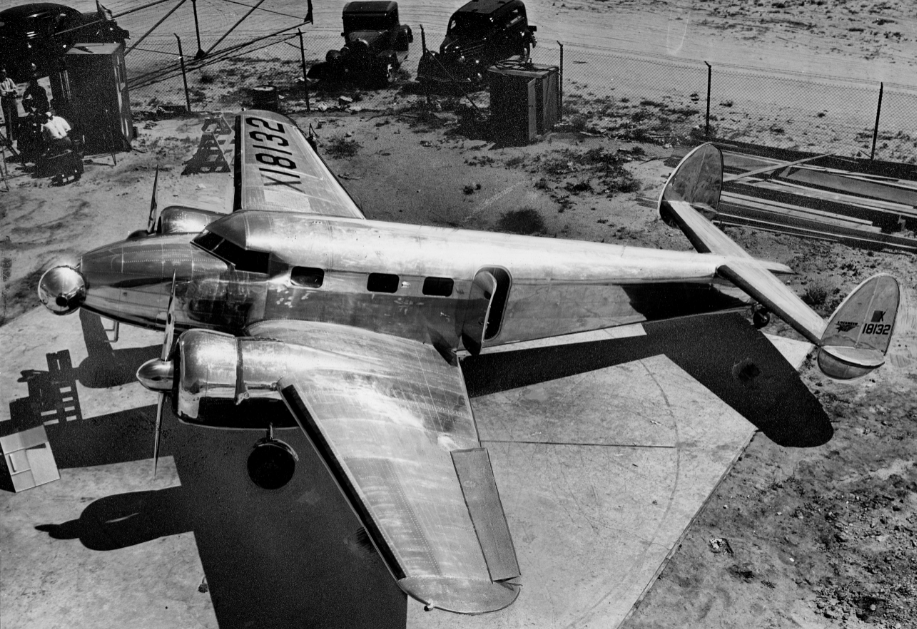
He never lost touch with the world of aviation. His avid love of flight continued until his death in 1988. He organized conferences, joined societies such as the Quiet Birdmen and the Society of Experimental Test Pilots, ‘an international organization that seeks to promote air safety and contributes to aeronautical advancement by promoting sound aeronautical design and development…’[5]
He advocated aviation through media and publishing, later working as a producer for Space Angel in the 1960’s. Mattern attended the launch of Apollo IX, XI, and XV; having his pilot’s license flown to the moon aboard Apollo XI.
His contributions to aviation have been invaluable, with major advances in the field actualized from his research, test flights and developments. He more than deserved to be inducted into the Oklahoma Air and Space Hall of Fame in 1981 and honored by a Texas Aviation Pioneer Day in 1988.
Footnotes
- John P.V. Heinmuller, ‘XXII James Mattern and Bennet Griffin’, Man’s Fight to Fly, (New York: Aero Print Company, 1945), pp. 173.
- John P.V. Heinmuller, ‘XXII James Mattern and Bennet Griffin’, Man’s Fight to Fly, (New York: Aero Print Company, 1945), pp. 173.
- John P.V. Heinmuller, ‘XXII James Mattern and Bennet Griffin’, Man’s Fight to Fly, (New York: Aero Print Company, 1945), pp.175.
- John P.V. Heinmuller, ‘XXII James Mattern and Bennet Griffin’, Man’s Fight to Fly, (New York: Aero Print Company, 1945), pp. 176.
- SETP, Introduction, https://www.setp.org/
Bibliography
Allen, Thomas J. ‘Guide to the James J. “Jimmie” Mattern Collection: Biographical Sketch,’ History of Aviation Collection (Dallas: The University of Texas at Dallas, McDermott Library, 1906-1991), pp.3-5. http://www.utdallas.edu/library/specialcollections/hac/general/Mattern.pdf
Heinmuller, John P.V. ‘XXII James Mattern and Bennet Griffin’, Man’s Fight to Fly, (New York: Aero Print Company, 1945),
SETP, Introduction, https://www.setp.org/
